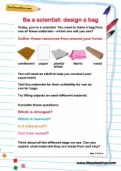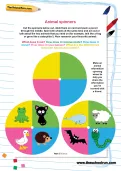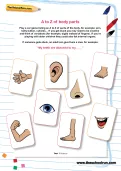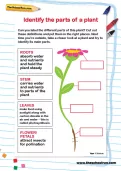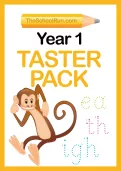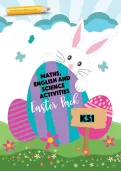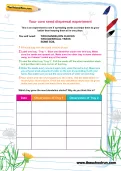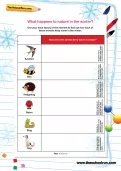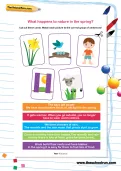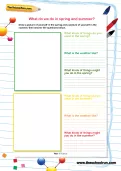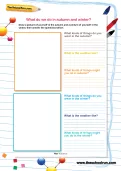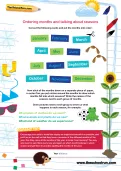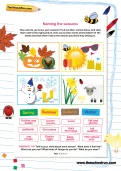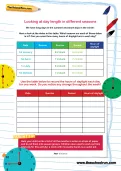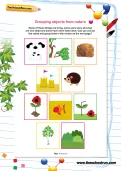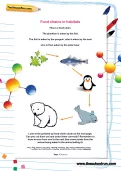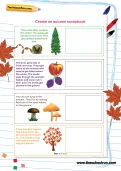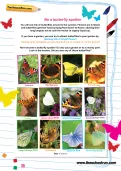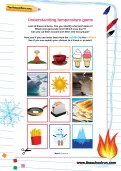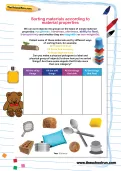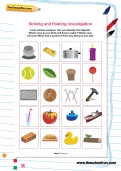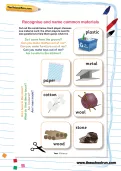Find out what your child will learn in Year 1 English, maths and science, try out a few learning activities and read our top tips about how to support their learning and development in our free, downloadable Year 1 Taster Pack.
or
Register to add to your saved resources
English, maths and science have a very chocolatey taste over the Easter break, with lots of maths, phonics, spelling and simple science investigations to keep chocolate-hunters busy and learning.
or
Register to add to your saved resources
Already a subscriber? to view this content.
Write letters to Santa, help the elves by counting presents, build a Christmas model village and more with our collection of festive learning activities for children in Year 1 and Year 2. Guaranteed to keep kids engaged with learning in the run-up to the celebrations!
or
Register to add to your saved resources
Already a subscriber? to view this content.
Try this experiment and discover if spreading seeds out helps them to grow better than keeping them all in one place.
or
Register to add to your saved resources
Already a subscriber? to view this content.
Use your local library or the internet to find out how each of these animals keep warm in the winter.
or
Register to add to your saved resources
Already a subscriber? to view this content.
Cut out these cards. Match each picture to the correct group of sentences!
or
Register to add to your saved resources
Already a subscriber? to view this content.
Can you think of things you do only in the spring and summer?
or
Register to add to your saved resources
Already a subscriber? to view this content.
Draw a picture of yourself in the autumn and a picture of yourself in the winter, then answer these questions about what you do in these seasons.
or
Register to add to your saved resources
Already a subscriber? to view this content.
Can you order the months of the year? Cut out all the months and stick them on a piece of paper in order. Now, see if you can put them into the right seasons.
or
Register to add to your saved resources
Already a subscriber? to view this content.
How well do you know your seasons? Cut out their names below and stick them next to the right picture, then cut out the words at the bottom of the sheet and stick them next to the season you think they belong in.
or
Register to add to your saved resources
Already a subscriber? to view this content.
Have a look at the dates in this table. Which season are each of these dates in? Can you count how many hours of daylight are in each day?
or
Register to add to your saved resources
Already a subscriber? to view this content.
Some of these things are living, some were once alive but are now dead and some have never been alive. Can you cut out the cards and group them in the circles?
or
Register to add to your saved resources
Already a subscriber? to view this content.
Look at these jumbled-up food chain cards. Can you cut them out and order them correctly? Remember to draw arrows from one to the next (the arrow points from the animal being eaten to the animal eating it).
or
Register to add to your saved resources
Already a subscriber? to view this content.
Autumn is a great time for collecting! Why not go on an autumn treasure hunt and make a scrapbook with all the things you discover.
or
Register to add to your saved resources
Already a subscriber? to view this content.
You will see lots of butterflies around in the summer. Flowers are in bloom and butterflies get their food by flying from flower to flower, sticking their long tongues out to suck the nectar (a sugary liquid) up. Can you spot any butterflies in your garden or to a nearby park. Look in the bushes. Did you see any of these butterflies?
or
Register to add to your saved resources
Already a subscriber? to view this content.
Some materials are more suitable for particular jobs than others. Look at these pictures and decide which of the materials could be used for each job. Which ones would not be suitable at all?
or
Register to add to your saved resources
Already a subscriber? to view this content.
Look at these pictures. Can you identify what each item is? Which ones generate heat? Which ones don’t? Can you cut them out and sort them into two groups?
or
Register to add to your saved resources
Already a subscriber? to view this content.
We can sort objects into groups on the basis of simple material properties: roughness, hardness, shininess, ability to float, transparency and whether they are magnetic or non-magnetic. Collect some of these materials and try different ways of sorting them. Can you make a physical pictogram to show how you’ve sorted things?
or
Register to add to your saved resources
Already a subscriber? to view this content.
Look at these pictures. Can you identify the objects? Which ones do you think will float in water? Which ones will sink? Why? Ask a parent if there any that you can test.
or
Register to add to your saved resources
Already a subscriber? to view this content.
Cut out the cards below. Each player chooses one material card; the other players need to ask questions to help them guess what it is.
or
Register to add to your saved resources
Already a subscriber? to view this content.
